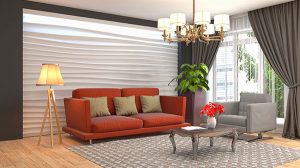10 Things to Look for When Choosing an Industrial Designer

Finding the right industrial designer is crucial to the success of any product in today’s highly competitive market. Industrial designers have a variety of responsibilities, including creating products that are aesthetically pleasing, but also ensuring their functionality, usability and market appeal. An industrial designer’s expertise can be a huge asset to any company, whether it is a new startup or an established business looking to redesign an existing product. These are the ten most important factors to take into consideration when selecting an industrial designer.
1. Experience and Portfolio Diversification
You should always consider the experience and portfolio of industrial designers when evaluating them. You should look for designers that have experience with projects similar to yours, whether it’s in complexity, industry or product type. A portfolio that is diverse shows adaptability, and broad skills from conception to execution.
2. Design Processes and Methodologies
Understanding how the designer approaches projects is important. Ask about the designer’s design process. How do they gather requirements, conduct research and refine designs? Structured methodologies ensure efficiency and clarity during the entire project lifecycle.
3. Technical Proficiency
Industrial designers must have technical expertise in addition to creativity. They should have a good understanding of CAD software (Computer Aided Design), prototyping tools and manufacturing processes that are relevant to your industry. You can ask them about their knowledge of materials, assembly methods, and production constraints.
4. Communication and Collaboration Skills
Successful product development often involves collaboration across disciplines. Make sure the designer is able to communicate effectively with you and your stakeholders. You should look for someone who can listen actively, ask insightful questions and articulate design decisions clearly.
5. Innovative Thinking
Innovation is the key to product differentiation and success on the market. Assess the designer’s creativity and ability to solve design problems in a creative way. The designer’s past work or conceptual work may provide insight into their ability to innovate.
6. UCD (User-Centered Design) Approach
The success of a product is dependent on the user experience (UX). Designers who place a high priority on user-centered design will ensure that their products are intuitive and easy to use. Inquire about the methods they use to gather user feedback and integrate it into their design process.
7. Understanding Branding and Market Trends
The design of a product should be in line with your brand’s identity and resonate well with your target audience. You should look for a designer that understands the principles of branding and is up-to-date with current design trends. They should have the ability to design designs that are both functional and marketable.
8. Project Management Skills
In product development, it is important to adhere to a budget and deliver on time. Project management skills are important to assess. Can the designer set realistic deadlines, manage their resources efficiently, and be flexible when faced with unexpected challenges? It is beneficial to have experience in managing projects from conception to production.
9. Test and prototype capabilities
The prototyping process allows the designer to refine and validate designs before they are produced in full scale. Ask about the designer’s prototyping abilities and testing resources. Prototyping in a hands-on manner shows a commitment to quality and usability.
10. Referrals and client testimonials
To gauge the designer’s reliability and reputation, ask for references. Feedback from previous clients can provide valuable insight into the designer’s professionalism, responsiveness and overall satisfaction.
When choosing the best industrial designer, it is important to consider their experience, skills, and design approach. Focusing on these 10 factors will help you find a designer that not only meets all your creative and technical requirements, but also matches your project’s goals and values. Remember that collaboration between you and your designer is essential to the success of a product launch.






